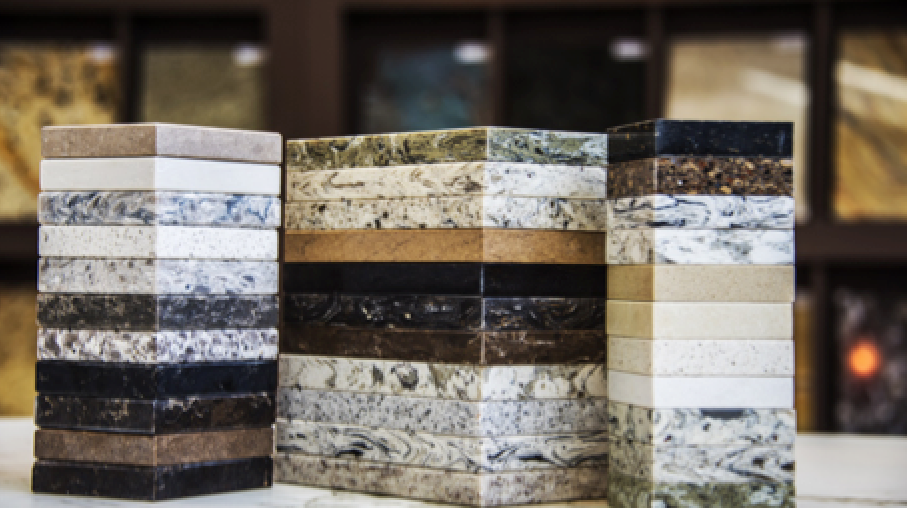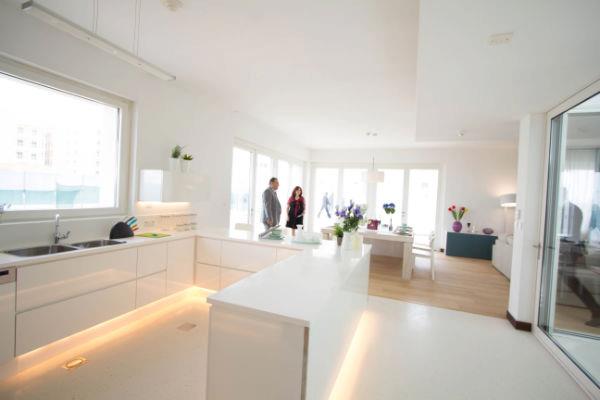There’s a time in every homeowner’s life that he or she must face: The remodel.
If you’re looking at homeowner statistics, you’ll see that the two rooms that are remodeled the most are the kitchen and bathroom; this probably has something to do with the amount you and your significant other, family member, or roommate use these rooms. Here, we’re going to focus on the kitchen remodel. The further we get into the article; the more detail we’ll find.
What’s the Focal Point to Your Remodel?
Remodels start with two components: Budget and focal points. We’ll tackle budgets a little later in the article, and we’ll focus on focal points now.
Every kitchen is unique, and all the current trends change almost yearly. With that being said, you’ll have to consider flooring, cabinet materials, backsplash, and countertops for your kitchen remodel. The decisions you make should fit together as a unit to display a sufficient and sophisticated look (how in-depth you get is your choice).
For the remainder of this article, we’re going to get into countertop material selection. Countertops are incredibly vital to your kitchen, considering most of your prepping, cooking, and eating happen on these surfaces. Let’s start to answer the basic questions before we begin discussing the materialistic options we have.
The Beginning: Questions to Ask Yourself
Before diving headfirst into your remodeling project, you’ll want to ask yourself a few questions regarding your countertops. First, start with this one: How do you choose what’s right for you? To determine what’s right for you, you’ll have to consider things like durability, cost, appearance, and maintenance of these surfaces. Ask yourself these questions:
– How much am I willing to spend?
– How much material will I need?
– Who typically uses the kitchen?
– What’s the maintenance like?
– Is what I’m choosing eco-friendly? Does this matter?
These questions and answers will guide you in the right direction. Jot them down on a piece of notebook paper and always consider your first answers from the beginning of the remodeling project. We’ll tackle each question with potential solutions separately below.
- Durability – What Surface is Right for Me?
The most common surfaces that homeowners choose from are granite, marble, quartz, soapstone, and laminate. Each option has their pros and cons that you’ll have to consider before purchasing.
Granite is a hard, one of a kind stone. The surface will not burn, scratch or stain, but the size of the pieces are unique and limited, resulting in sporadic seams across the top. Fortunately, the stone is also heat and wear resistant. If you have a high traffic kitchen, you’ll want to lean away from this option, as you’ll have to seal its surface at least once a year. Granite requires sealing because of its porous surface.
Marble is extremely versatile and offers an array of colors. On the con side of things, marble is vulnerable to scratching and stains.
Quartz can withstand high traffic in your kitchen. This countertop does not require sealing as often as granite does and does not scratch and stain quickly, as it’s made from engineered stone. A quartz surface is long-lasting.

Soapstone countertops are known for their heavy-duty durability. Typically, these surfaces have a honed finish. Honed finishes do not have a high gloss shine as most granite countertops do. Most of the time, soapstone comes in a dark gray color, and over time it may darken and/or crack. These countertops are susceptible to stains without polish and can easily scratch by a fingernail.
Laminate is an old favorite that’s super easy to keep clean. Unfortunately, if you scratch these surfaces, you will not be able to sand or buffer the marks out; the scratch will be present until you replace the entire countertop.
- Cost – What’s Your Budget Like?
Don’t break the bank with this one; stick to your initial budget and don’t go over it. The worst thing about remodeling is the unfortunate outcome of debt. Plan out the materials you’ll need and the square footage before you make your purchase, don’t just go to a remodeling store and pick out the prettiest surface that catches your eye.
Granite is very affordable, especially in comparison to marble and quartz countertops, which are the most expensive. Soapstone is comparable in price to granite, and laminates are constructed to look like some of the more expensive granite options. If you’re looking to cut costs where you can, lean towards the solid surface countertops; these creative man-made surfaces are made from natural materials and acrylic polymer. The result is a durable, nonporous countertop that is easily fixable if stains or scratches appear. What’s more, is that this option is 20% less expensive than any stone option you were considering.
- Visual Appearance – What Design Do You Want in Your Kitchen?
The visual appearance should focus on complimenting the kitchen cabinets and appliances throughout the room. Some homeowners prefer to have a unique kitchen look, whereas others prefer to adopt a more natural look.
If you’re aiming to create a clean and natural look, go with granite. If you’d rather have a contrast in your kitchen, choose dark countertops and make your kitchen cabinets white.
- Maintenance – How Much Work Are You Willing to Put in?
Ask yourself this question first: Do you have a busy kitchen?
If you do have a busy kitchen, you may want to consider the amount of maintenance you’re willing to put into your countertops. We suggest you choose a countertop that requires minimal maintenance when you have a busy kitchen.
Granite countertops require the most maintenance, considering they’ll need a yearly sealing to keep the stains and bacteria out of their porous surfaces. On the other hand, engineered stone countertops like marble and quartz do not require sealing processes. Natural wood countertops will require an oil sealant every six months to a year, too.
- Eco-Friendly – Does This Matter to You?
Some homeowners like to consider eco-friendly options for their countertops. If this sounds like an option you’d be willing to lean towards, you might want to start considering surfaces like recycled glass and reclaimed wood.
Keep in mind, these materials do require a lot more maintenance than traditional countertop surfaces.
Start Remodeling
Weigh all your options carefully. Take notes if you think that will help out. Once you’ve concluded, you can start your remodeling.
One final hint: You don’t need to use the same countertop options throughout your kitchen. If you’re trying to make a statement or save some extra money, you can switch up your countertop styles. Use one option for your island and another underneath your cabinets; believe it or not, mixing materials is in style for the 21st century! Have fun with it and don’t be shy; kitchens can be as creative as you’d like.

